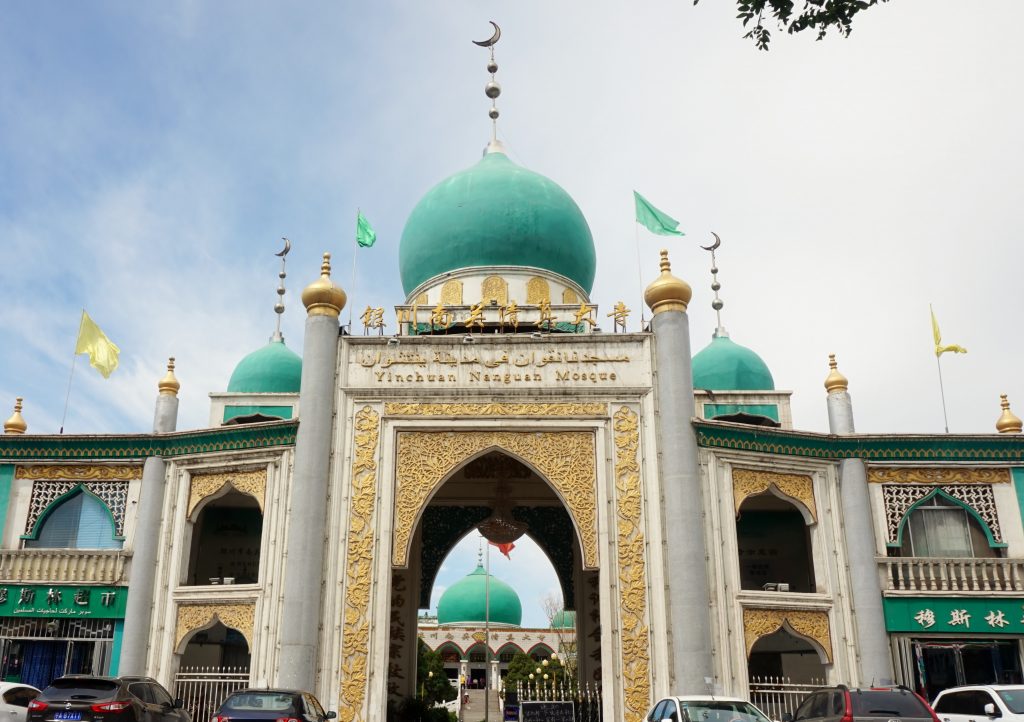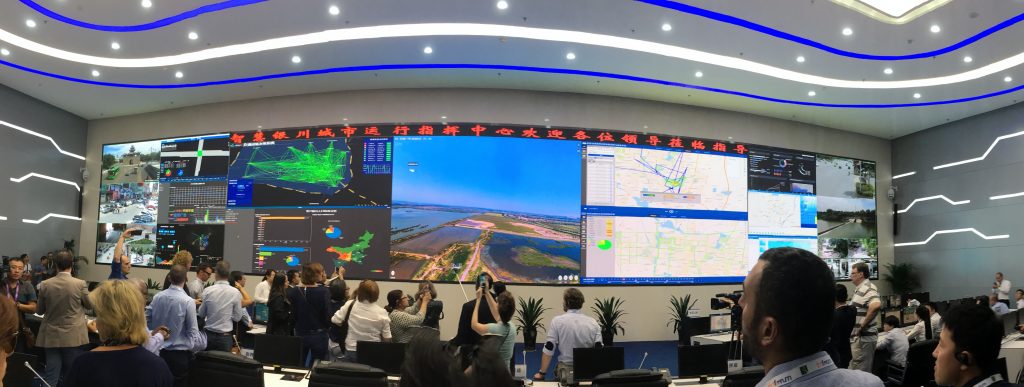Following-up on our latest blog entry about the TM Forum Smart City InFocus conference, this post is going to focus on the host city of the event: Yinchuan. Yinchuan is a city in the northwest of China with a population of about 2 million people, which has been selected as a pilot city to become a “smart city.” This is the result of a national plan for building new cities to give response to China’s rapid urbanization rate and the Chinese cities’ willingness and aspirations to become among the smartest in the world.
As the capital of the Ningxia Hui Autonomous Region and the former capital of the Western Xia Empire of the Tanguts, Yinchuan is a political, economic and cultural center in the Ningxia Province. The city is a multi-national metropolis with many ethnic groups including Hui, a Chinese ethnic minority predominantly of Muslim faith, Han, Manchu, Mongolian and Chaoxian peoples, among many others.

Smart Yinchuan
Today, the city is undergoing an ambitious renovation. In 2013 Yinchuan was selected as a pilot smart city in China, with the aim to transform the city into “Smart Yinchuan.” The Smart project, led by the Yinchuan government and ZTE Corporation – which signed an agreement in 2014 to invest $500 million on smart city initiatives in Yinchuan -, has achieved success in many diverse areas after little more than two years.
Smart Yinchuan is designed to integrate different smart city applications and innovative digital technologies, including smart traffic management, big data, a more interactive and responsive city administration and e-government, optimized garbage collection, affordable housing, telemedicine services, smart environmental protection, advanced public security, among others. For instance, while walking on the streets of Yinchuan, you can see highways and streets full of Cameras and RFID readers for public safety and data collection.
During the event, the organizers took us, the delegates, to a city tour of “Smart Yinchuan.” The tour included a visit to the Yinchuan Citizens Hall – with its administrative system reform for Smart Government -, the City Operations Command Center, and to a Smart Community.

In the Smart Community people can benefit from smart services, such as face-recognition access control systems, electronic bus stop boards, free community WiFi, treated drinking water utilities, intelligent trash cans, and daily physical examination rooms. There are plans to expand these smart residential zones in the following year.
By far, what caught my attention was that many of the residential building complexes, offices buildings and Government buildings in the new part of the city seemed to be pretty empty. The old town looked crowed, but the new city looked half empty.
However, taking into account that China’s urbanization rate continues to rise at an unprecedented speed – the country’s urbanization rate is expected to reach about 60 percent by 2020, which means some 100 million people moving from the countryside to cities over the next years -, it looks like city developers in Yinchuan have planned a city for a much higher population than the current one, establishing the bases and infrastructures ready for those people to move in.
Have you ever visited Yinchuan? Tell us about your experience!




Oh yes, I have been to Yinchuan in 2015, it’s a beautiful smart city. China has potential to make more smart cities like Yinchuan in future.
A very beautiful city and so look beautiful once on the image. Another time maybe I could go there to visit the city. Yes hopefully. Thank you for posting this nice and interesting.
With Yellow River, Yinchuan enjoys beautiful natural scenery and favorable conditions for agriculture and has long earned the fame of a “River Side City in the Northwest” and “Home to Fishes and Rice”. Yinchuan is now the permanent site for China-Arab Expo which is an international platform for cultural and economic exchanges between China and Arab countries.
A great city so far!
Apart from the above point you mentioned, i would like to add video analytics in the Smart city also. the reason is as we know as our streets get more crowded with more traffic, the need of the hour is smart solutions that can help us control and curb traffic-related problems.
I like this topic with useful information. Keep writing.
Apart from the above point you mentioned, i would like to add video analytics in the Smart city also.
Its people are the one who make a city smart, other than that literacy and with latest technology.
An amazing city and so look beautiful once on the image. Another time maybe I could go there to visit the city. Yes hopefully. Thank you for posting this nice and interesting.
Amazing information. Highly recommend that article
This is absolutely amazing and helpful. Thanks for sharing. keep writing great stuff.
Hello everyone,
I’m thrilled to see the discussion on smart cities gaining momentum, and one project that stands out in this domain is “Capital Smart City.” This visionary project incorporates a myriad of cutting-edge features that truly define the essence of a smart city.
Capital Smart City distinguishes itself with its integrated infrastructure, leveraging advanced technologies to enhance the quality of life for its residents. The incorporation of smart grids, intelligent transportation systems, and sustainable energy solutions are noteworthy features. The city’s commitment to environmental sustainability is reflected in its green spaces, energy-efficient buildings, and eco-friendly initiatives.
What’s particularly impressive is the emphasis on digital connectivity and smart governance. Capital Smart City leverages smart technologies to create a seamless and connected urban experience. The integration of smart sensors, data analytics, and high-speed connectivity ensures efficient services, from traffic management to waste disposal.
Additionally, the focus on creating a vibrant community through smart amenities such as healthcare, education, and recreation adds another layer of appeal to Capital Smart City. It’s heartening to see a project that not only embraces technological advancements but also prioritizes the well-being and convenience of its residents.
I’m eager to witness how Capital Smart City continues to set the benchmark for smart city developments. Let’s keep the conversation going on the future of urban living!
Best regards,
Muhammad Imran
A smart city integrates technology to enhance urban living, promoting sustainability, efficiency, and connectivity. It employs data-driven solutions for improved infrastructure, services, and overall quality of life.
Artificial Intelligence (AI) plays a pivotal role in the evolution of smart cities, transforming urban landscapes into intelligent, efficient, and sustainable environments. Through the integration of AI technologies, smart cities leverage data-driven insights to enhance various aspects of urban living.
It’s intriguing to witness how Yinchuan navigates the complexities of rapid urbanization while aspiring to be among the world’s smartest cities.
so cool!! Yinchuan has successfully integrated smart technologies into various aspects of city life, although infrastructure-related challenges appear to be greater than the current population. This shows their commitment to facing the future of China’s rapid urbanization.
An amazing city and so look beautiful once on the image. Another time maybe I could go there to visit the city. Yes hopefully. Thank you for posting this nice and interesting.
This article offers an insightful look into how Yinchuan, China, has embraced smart city technologies to enhance urban living. As a real estate investor, I definitely took advantage of it. Great content.